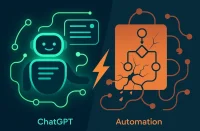AI cloud stocks analysis reveals a fascinating comparison between today’s artificial intelligence boom and the infamous dotcom bubble of the late 1990s. As investors navigate the current market landscape, understanding these historical parallels becomes crucial for making informed investment decisions. The recent surge in AI-related stocks has drawn attention to vendor financing patterns, customer concentration risks, and the fundamental differences between today’s tech giants and their predecessors.
The current AI revolution presents both opportunities and risks that mirror the dotcom era in unexpected ways. While companies like NVIDIA demonstrate massive vendor financing commitments and customer concentration similar to Lucent Technologies during the dotcom bubble, the underlying fundamentals tell a different story. Today’s AI leaders generate substantial profits and maintain strong balance sheets, unlike the cash-burning startups that characterized the dotcom era.
The Lucent-NVIDIA Parallel: Vendor Financing Concerns
Striking similarities exist between NVIDIA’s current position and Lucent Technologies during the dotcom bubble. Lucent had $15 billion in vendor financing with only $300 million in operating cash flow, relying heavily on just two customers who represented 23% of their business. NVIDIA’s current situation shows $110 billion in vendor financing with two customers representing 39% of their business.
The vendor financing model raises legitimate concerns about customer concentration and the sustainability of growth. When companies extend significant credit to their customers, they create dependencies that can become problematic if those customers face financial difficulties or reduce their spending. This pattern was particularly evident during the dotcom crash when many companies that had extended vendor financing found themselves with massive write-offs.
However, the key difference lies in the underlying business fundamentals. NVIDIA generates substantial operating cash flow and maintains a strong balance sheet, unlike Lucent which struggled with profitability throughout the dotcom era. The current AI boom is driven by companies with significant financial resources and proven business models, rather than speculative startups with uncertain revenue streams.
Data Consumption Revolution: The New Paradigm
A fundamental shift is occurring in how technology companies generate revenue. The traditional seat-based software model, exemplified by companies like Salesforce and Workday, is being replaced by consumption-based pricing that charges customers based on actual usage rather than user seats.
This consumption model represents a more sustainable approach to technology adoption. Companies like Datadog, Snowflake, and MongoDB charge based on data consumption, creating a direct correlation between customer value and revenue. This model encourages customers to use more of the service as they grow, naturally expanding the revenue base without requiring additional sales efforts.
The consumption-based model also provides better visibility into customer health and usage patterns. Companies can identify which customers are growing their usage and which might be at risk of churning, allowing for more proactive customer success management. This data-driven approach to customer relationships represents a significant advantage over the traditional seat-based model.
Cloud Infrastructure Strength: The Foundation of AI Growth
Strong consumption trends are evident across the major cloud providers, including Amazon Web Services, Microsoft Azure, and Google Cloud Platform. These companies are experiencing robust growth as enterprises continue their digital transformation initiatives and adopt AI technologies at scale.
The cloud infrastructure providers benefit from the AI boom in multiple ways. They provide the computational resources needed to train and run AI models, host the data that feeds these systems, and offer the services that enable AI applications to scale. This positions them as essential enablers of the AI revolution rather than just participants in it.
Oracle has also emerged as a significant player in the cloud infrastructure space, demonstrating that the market can support multiple large-scale providers. The competition among these providers drives innovation and cost efficiency, benefiting both the companies themselves and their customers who can choose from multiple options.
The AI Premium Problem: Avoiding Overvaluation
An important distinction exists between companies that trade on AI hype versus those with strong underlying fundamentals. Many companies in the current market carry significant AI premiums that may not be justified by their actual AI capabilities or revenue generation.
Companies like Datadog, Snowflake, MongoDB, and Elastic represent a different investment thesis. These companies have strong fundamentals based on their core data consumption businesses, with AI capabilities serving as additional value rather than the primary driver of their valuation. This approach provides a more sustainable investment opportunity that isn’t dependent on AI hype.
The data consumption companies have not experienced the same dramatic price appreciation as pure AI plays, making them potentially more attractive from a valuation perspective. They offer exposure to the AI trend without the extreme volatility and potential overvaluation that characterizes many AI-focused stocks.
Market Recovery Patterns: Learning from History
Data consumption companies are still trading well below their 2020-2021 peaks, unlike big tech companies that have reached new all-time highs. This creates potential opportunities for investors who believe in the long-term growth of data consumption and cloud computing.
The recovery pattern for these companies often follows a specific trajectory. After the initial selloff, these stocks tend to drift sideways for an extended period before beginning to show signs of life. When they start to break out from their consolidation patterns, it often signals the beginning of a new uptrend.
This pattern recognition can be valuable for timing investments in the data consumption space. The key is identifying when these companies have found their bottom and are beginning to show signs of fundamental improvement, rather than trying to catch a falling knife during the initial decline.
The Dotcom Era Lessons: What We Learned
Current market analysis benefits from the lessons learned during the dotcom crash. The most important lesson is the difference between companies with strong fundamentals and those built primarily on hype and speculation. Companies that survived and thrived after the dotcom crash were those with real business models, strong cash flow, and sustainable competitive advantages.
The current AI boom appears to have more substance than the dotcom bubble, with companies generating real revenue and profits from their AI capabilities. However, the vendor financing patterns and customer concentration risks remain valid concerns that investors should monitor closely.
The key is to focus on companies with strong underlying businesses that happen to benefit from AI trends, rather than companies whose entire value proposition depends on AI hype. This approach provides better downside protection while still allowing participation in the AI growth story.
Investment Strategy: Balancing Growth and Value
A balanced approach to investing in the current market environment is recommended. Rather than chasing the highest-flying AI stocks, investors should consider companies with strong fundamentals that are positioned to benefit from long-term trends in data consumption and cloud computing.
The data consumption companies offer several advantages for investors. They have proven business models, strong customer relationships, and predictable revenue streams based on usage. They also provide exposure to the AI trend without the extreme volatility that characterizes pure AI plays.
Diversification across different types of companies in the cloud and data space can help manage risk while maintaining exposure to growth opportunities. This might include a mix of infrastructure providers, data consumption companies, and select AI-focused companies with strong fundamentals.
The Future of AI and Cloud Computing
The future points to AI capabilities becoming increasingly integrated into everyday business operations. The companies that will succeed in this environment are those that can provide the infrastructure, tools, and services that enable this integration.
The consumption-based model appears to be the future of software and cloud services, as it aligns customer value with vendor revenue. This model encourages innovation and efficiency while providing better visibility into customer success and growth potential.
As AI capabilities become more sophisticated and widespread, the companies that can provide the underlying infrastructure and tools will likely see sustained growth. The key is identifying which companies have the strongest competitive positions and most sustainable business models in this evolving landscape.
AI + Cloud: Powering the Future
As AI and cloud computing merge into everyday business operations, the demand for skilled professionals has never been higher. Employers can seize this moment by hiring cloud engineers, AI specialists, and infrastructure experts to drive innovation and growth. Post your job on WhatJobs today and connect with top talent ready to shape the next era of intelligent cloud solutions.
Post a Job Free for 30 Days →Risk Management: Avoiding the Pitfalls
Several risks exist that investors should consider when investing in this space. Customer concentration remains a significant concern, particularly for companies that rely heavily on a small number of large customers. Vendor financing can also create balance sheet risks if customers face financial difficulties.
The AI hype factor represents another risk, as many companies may be overvalued based on their AI capabilities rather than their fundamental business performance. Investors should focus on companies with strong underlying businesses that happen to benefit from AI trends, rather than companies whose entire value depends on AI hype.
Market timing is also crucial, as these stocks can be volatile and subject to significant corrections. A long-term perspective and dollar-cost averaging can help manage this volatility while maintaining exposure to the growth potential of the sector.
Frequently Asked Questions
What does AI cloud stocks analysis reveal about the current market?
AI cloud stocks analysis reveals striking similarities to the dotcom bubble in terms of vendor financing and customer concentration, but with stronger underlying fundamentals and more sustainable business models that generate real profits and cash flow.
How does AI cloud stocks analysis compare to the dotcom era?
AI cloud stocks analysis shows that while vendor financing patterns and customer concentration risks mirror the dotcom era, today’s AI companies have stronger balance sheets, generate substantial profits, and are backed by companies with significant financial resources rather than speculative startups.
What are the key investment opportunities in AI cloud stocks analysis?
Key opportunities include data consumption companies like Datadog, Snowflake, and MongoDB that have strong fundamentals with AI as additional value, cloud infrastructure providers benefiting from AI adoption, and companies with consumption-based pricing models that align customer value with revenue.
How can investors use AI cloud stocks analysis to manage risk?
Investors can manage risk by focusing on companies with strong underlying businesses that benefit from AI trends, diversifying across different types of cloud and data companies, avoiding pure AI hype plays, and maintaining a long-term perspective with dollar-cost averaging strategies.
A Real-World Example: Michael’s Investment Journey
Michael Chen, a 35-year-old portfolio manager from San Francisco, exemplifies how AI cloud stocks analysis can guide investment decisions. After witnessing the dotcom crash firsthand as a young investor, Michael was initially skeptical of the current AI boom and its potential parallels to the 1990s bubble.
“I remember watching Lucent and other dotcom companies collapse, and I was worried we might be seeing the same patterns with NVIDIA and other AI companies,” Michael explains. “But when I did my AI cloud stocks analysis, I realized there were fundamental differences that made this situation more sustainable.”
Michael’s analysis focused on the underlying business fundamentals rather than just the AI hype. He was particularly interested in companies like Snowflake and Datadog that had strong consumption-based business models and were trading well below their previous peaks.
“AI cloud stocks analysis taught me to look beyond the surface-level similarities to the dotcom era,” Michael says. “The key was identifying companies with real business models that happened to benefit from AI trends, rather than companies whose entire value proposition depended on AI hype.”
Through his systematic approach to AI cloud stocks analysis, Michael was able to build a diversified portfolio that captured the growth potential of the AI revolution while managing the risks associated with market volatility and overvaluation. His experience demonstrates the importance of thorough analysis and historical perspective when navigating complex market environments.




